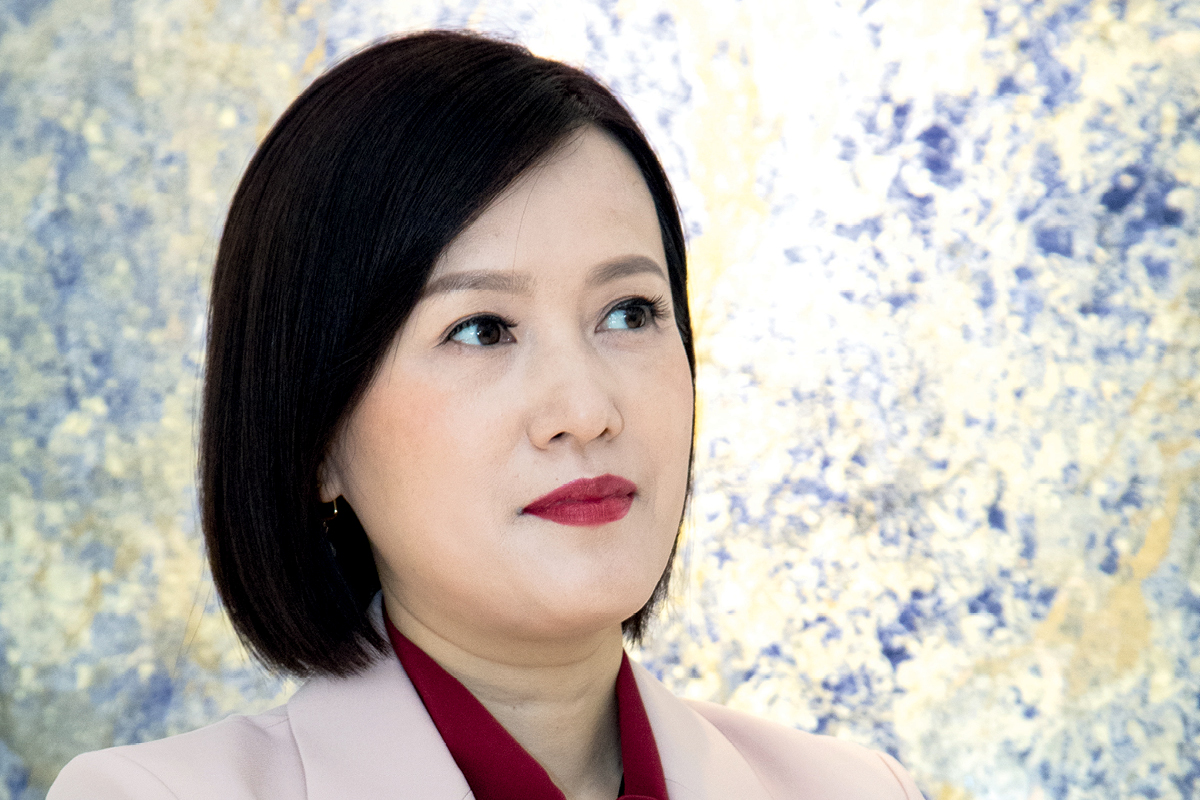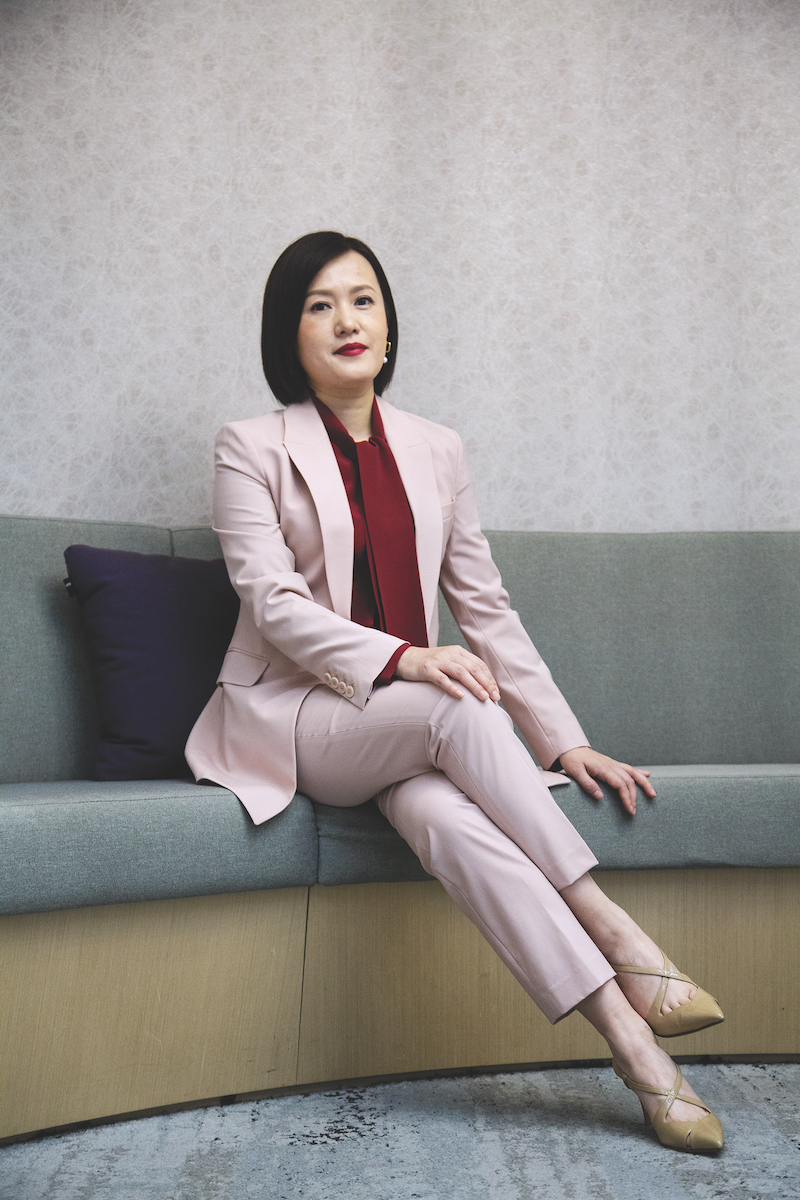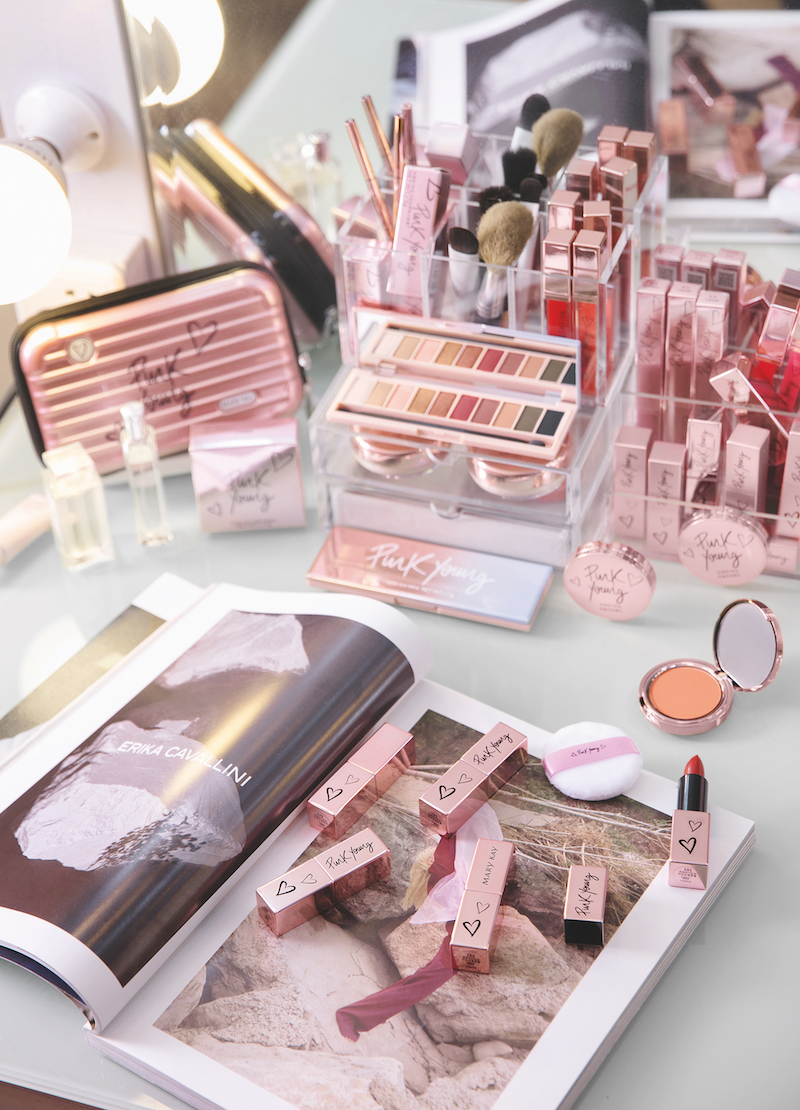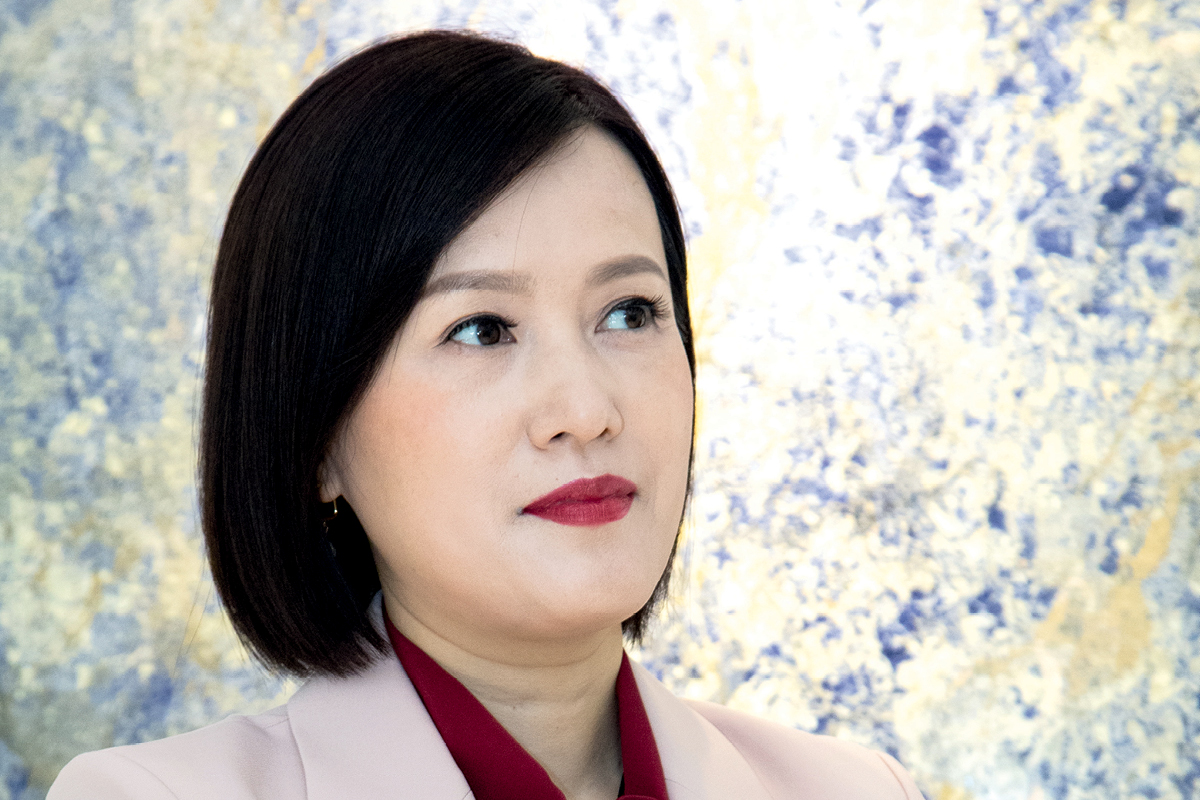Mary Kay, the monumental, direct-selling beauty company, prides itself on women’s empowerment. The company’s origins date back to 1963, when Mary Kay Ash left her job in direct sales to open her first beauty store in Dallas, Texas.

The company was built around the Golden Rule – treat others how you would like to be treated. It began with five products and has since expanded to include more than 700 skincare, make-up and fragrance varieties.
After gaining traction in North America, Mary Kay launched into the international scene. The company’s first foray into international waters was in Australia in 1971 and it has since built a presence in nearly 40 countries.
Today, Mary Kay is one of the world’s largest direct-selling companies and has millions of Independent Beauty Consultants. Mary Kay is known for its iconic pink branding and the pink Cadillacs driven by its top-performing consultants.
China has been one of its largest markets since 2013. Katherine Weng, Senior Commercial Vice President at Mary Kay China, had never heard of the company prior to joining but something about its advertising caught her attention.
“What brought me to Mary Kay for an interview was an interesting advertisement, which made me feel that this company was quite different,” she recalls.
“Other cosmetics companies usually have products on their advertisements, but the one I saw had the image of a female leader. That is how Mary Kay made a very powerful first impression on me.”
On her first day, Katherine recalls seeing the Golden Rule principle written on the walls, along with the idea of putting faith first, family second and career third. “At that time, I thought the company was quite gutsy to put these words on the wall.”
Katherine’s first job in the business was as a Beauty Centre Manager, a daunting task for Katherine when she began. “There were changes to direct-selling regulations and requirements in China for the first time, so I didn’t have any predecessor experience to rely on,” she says.
“When I was trying to figure out what I should do, I went to ask Mary Kay’s President at the time and he answered me in one sentence: ‘Katherine, you can do it!’”
That simple phrase is cultivated throughout the business and continues to resonate with Katherine to this day. She explains how, one week after being transferred from operations to sales, she was sent to the US.
It was yet another massive undertaking for her. “I was very nervous as I didn’t know how to do sales, and it was my first trip to the US,” she says.
“I was worried about the language, local habits and customs. However, the Vice President of Sales at the time also said to me, ‘Katherine, you can do it!’ When I said that I didn’t know sales, she said, ‘That’s why we are sending you over there, to learn.’ She always let me know that I could do it.”
Stronger within
Katherine highlights that Chinese culture is centred around one’s internal and external cultivation, akin to the Mary Kay principles. “Many companies tend to recruit people with experience,” she says.
“On the contrary, Mary Kay trains you and makes you feel so strong from within; that you can do a lot of things. This inner shaping made me feel I could try anything. It is an intangible asset.”
Mary Kay China strives to create an inclusive working environment. Katherine describes meeting a visually impaired sales director, Xiao Jia, who found success within the business.
“It is impossible for many people to imagine a visually impaired make-up artist,” Katherine says. “If Xiao Jia didn’t have the spiritual pillar of ‘you can do it’ in her heart, I don’t think she would try it at all.”
“Many women are discriminated against on grounds such as age and gender; however, Mary Kay would like to tell you that ‘you can do it’. This has nothing to do with your academic education, personal background or appearance. After I met Xiao Jia, I realised the notion of ‘defect’ doesn’t apply.”
“Many women are discriminated against on grounds such as age and gender, however, Mary Kay would like to tell you that you can do it.”
Who is Mary Kay Ash?
After 25 years working in direct sales, Mary Kay Ash retired realising she would never get the recognition she deserved at the company she worked for. Following retirement, Mary Kay was inspired to write a book to help women achieve success in a male-dominated world. Inadvertently, she ended up creating a marketing plan for a business.
Mary Kay founded the eponymous company with US$ 5,000, a solid business plan and a burning desire to change the working future of women; she was truly ahead of her time. An innovative trailblazer, she championed women’s entrepreneurship and empowerment in a traditional male-dominated business environment at a time when women were viewed and treated as unequal to men.
Recognised today as one of the world’s greatest entrepreneurs, Mary Kay opened the doors to an amazing opportunity that has empowered millions of women around the world and continues to thrive.
Cutting-edge technology
Mary Kay’s Independent Beauty Consultants conduct skincare and beauty classes for women to fully understand their skin and the range of cosmetics suitable for it.
“When we first entered China in 1995, most women barely had any knowledge of skincare concept and routine, so small beauty classes were launched with three to six people per class,” Katherine explains. “The classes were intimate and interactive, and helped women learn how to care for and understand their skin in an experiential atmosphere.”
Over the past 20 years, consumers have become more mature and confident in their understanding of beauty and skincare products. As a result, the beauty classes have evolved.
The classes now feature high-tech skin analysers and an optical lens with a magnification of 50 times. They even use artificial intelligence.
“The skin analyser in the hands of our consultants provides real-time skin analysis to understand the six dimensions of skin: moisture, oil, elasticity, pores, skin tone and sensitivity,” Katherine says.
“It then personalises skincare regimens and product recommendations for customers. We also use augmented reality technology to allow customers to scan their faces on their mobile phones to preview the make-up effect.” Research and development has become a significant focus for Mary Kay.

In 2018, the firm opened the new Richard R Rogers Global Manufacturing and R&D Center in Lewisville, Texas. “We hope to develop high-performance products with cutting-edge technology to bring remarkable and visible transformation to consumers,” Katherine says.
“In 2019 alone, we will be launching several new high-performance products that reawaken skin vitality and boost the look of skin brightness in three weeks.”
In addition, the company introduced an online consumer ordering channel. “The platform enables customers to use apps such as WeChat to place orders with their Independent Beauty Consultants with one click,” Katherine says. “There are also beauty consultants available to provide services and professional guidance through after-sales.”
A changing beauty landscape
Mary Kay recently launched the make-up brand Pink Young in China. It was first introduced in Milan, Italy. “Pink Young for Mary Kay is not just a brand name, it reflects the Pink Power of the new generation of women,” Katherine says.
“The ‘you can do it’ culture at Mary Kay encourages women to jump out of the box that restricts them. We hope that when women have this Pink Power, they will not be restricted by anything.”
“The ‘you can do it’ culture at Mary Kay encourages women to jump out of the box that restricts them.”
Pink Young’s make-up range is fun and bold. It was designed by the Mary Kay Design Studio –comprised of the global creative team at Mary Kay – together with global colour masters and top colour professional organisations.
This Pink Young team started their research in Milan and looked for inspiration from all over the world. The project required months of research on future trends in many fields, such as art, fashion and architecture, and the team explored various pioneer formulations and colours to produce the final product.
As beauty and technology trends have changed, so too has the way in which they are advertised. Beauty blogging has increased significantly in recent years, with several prominent beauty bloggers in China attracting millions of followers across their social media platforms.
Mary Kay is involved in several philanthropic activities. It launched The Mary Kay Foundation in 1996, which is dedicated to helping stop domestic violence and fund research into cancers that affect women.
Mary Kay has established several initiatives and global campaigns. For example, thanks to its Pink Changing LivesSM initiative, a percentage of sales from selected Mary Kay® products is used to benefit organisations that promote education, health and wellbeing, and self-reliance activities for women in need and their families. Mary Kay has partnered with the United Nations Development Programme and the China Women’s Development Foundation to promote female entrepreneurship in China.
“Nielsen’s market research data shows that one of the most popular careers for women born in the 1990s is beauty blogging,” Katherine says.
Mary Kay China has also jumped on board with online beauty blogging trends. It launched the MK STAR program in China in 2018 to support women who want to turn their interest in make-up into a business.
“These young women who love make-up and sharing their beauty tips are called MK STARs in Mary Kay,” Katherine notes. “They are more than happy to share their beauty secrets with others on various social media platforms such as Xiaohongshu and WeChat, as well as through offline activities.”
There are several levels to the program. Katherine explains how Mary Kay China first invites celebrity make-up artists to teach MK STARS make-up techniques. These lessons are taught in ‘Pink Trend Classes’.
“Second, we assist them in building their personal image on the internet by inviting media experts to help them create individual personalities for their online presence,” Katherine continues.
“There are also online courses to teach them how to carry out social media marketing. Third, Mary Kay provides some personal experiences in high fashion for this group of young women.”

Ten MK STARs were selected to attend Shanghai Fashion Week to create make-up for couture models and celebrities in April 2019.
A focus on health and fitness has become a growing trend in China – something Mary Kay is looking to capitalise on as well.
“Health products are still an emerging market in China,” Katherine says. “Consumers have strong health needs but they lack knowledge in this area. Some people mistakenly use certain products as substitutes for medicines.
For Mary Kay, our corporate responsibility lies in delivering scientific health knowledge to consumers, especially the mother in every family. “We want to help each family have one member with health knowledge,” Katherine says.
Three years ago, the company launched the Daily Benefits® nutrition line for the Chinese market. “We turned beauty into comprehensively balanced beauty. The skincare products and make-up help to make the skin more beautiful externally, while the nutritional products help to make the body healthier internally.”
Future focus
Mary Kay will celebrate its 60th anniversary in 2023 – an event Katherine is looking forward to. “I hope that the 60-year-old Mary Kay will be as vibrant as ever,” she says. “It will be a brand that is historical, but always energetic, youthful, innovative and at the forefront of fashion.”
Looking back over her time at Mary Kay, Katherine is not only proud of how far she has come, but how far everyone she knows has progressed as well. “On my first day with Mary Kay, I saw that culture posted on the wall,” she says.
“After 24 years, the culture written on the wall came down and became many living people. I saw ordinary, shy women who came to Mary Kay and may only have wanted to have better skin. However, they gradually became more confident while their skin got better, and they were willing to share their beauty tips with others and help those who used to be like them. Changes are happening in their families as they pass on to their children the mentality of bravely seeking change and achieving better results.”



